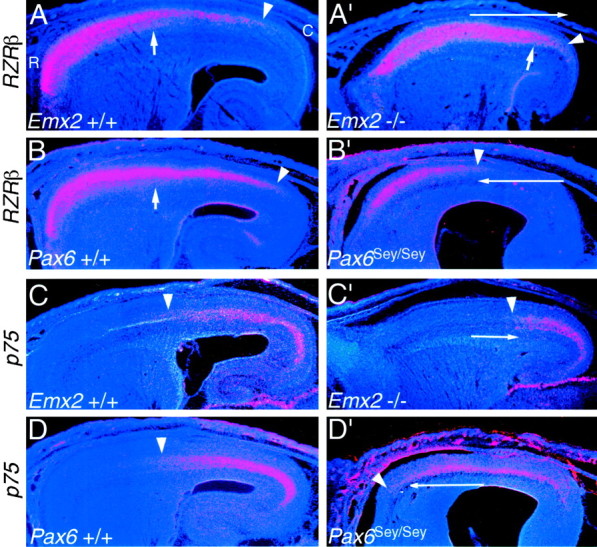Fig. 4.

The complementary expression patterns ofRZRβ and p75 show opposing shifts inEmx2 and Pax6 mutants. In situ hybridizations on sagittal sections through the forebrain of E18.5 mice using S35-labeled riboprobes for either the nuclear receptor RZRβ (A–B′) or the neurotrophin receptorp75 (C–D′) and counterstained with bisbenzimide are shown. Sections are fromEmx2 wild-type (+/+) and mutant (−/−) littermates orPax6 wild-type (+/+) and mutant (Sey/Sey) littermates and are taken from similar medial–lateral positions. Eachpanel is a montage of single-exposure photos using dark-field illumination with a red filter to view the silver grains and UV fluorescence to view the counterstain. RZRβ shows two distinct high rostral to low caudal gradients across the wild-type neocortex (A, B), a gradient in superficial layers that extends farther caudally (marked byarrowheads) than a gradient within the deeper layers (marked by short arrows). Both gradients ofRZRβ expression expand caudally in Emx2mutants (A′) and constrict rostrally inPax6 mutants (B′). p75 is expressed in the deep layers in roughly the caudal half of the wild-type neocortex (C, D).p75 expression constricts caudally inEmx2 mutants (C′) and expands rostrally in Pax6 mutants (D′). Thearrowheads mark the rostral limit of expression. Thelong arrows in A′–D′ indicate the opposing shifts in expression in the mutants. See Results for details. C, Caudal; R, rostral.
